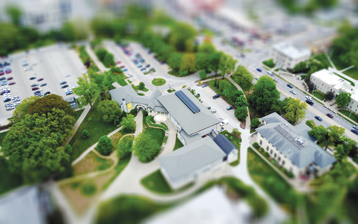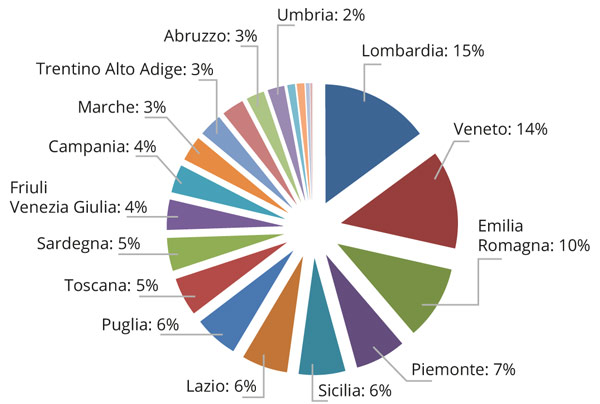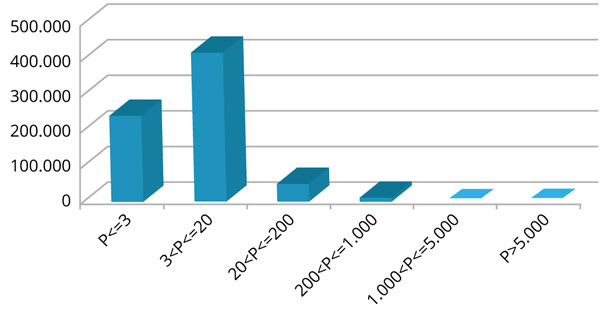People and objects need energy to move. Today, the technology that allows this mobility by using renewable energy already exists.
Zero emission from zero emission
The electric mobility can be part of a system connected to the renewable energy production and thanks to an active and efficient management of the charge and discharge process, we can bring economic and environmental benefits.
The photovoltaic deployment
» In Italy there are a lot of photovoltaic installations that produce energy with no use of fossil fuel and without emitting greenhouse gases. From the GSE statistical report, it is stated that the total plants are more than 700.000 units, and are distributed as illustrated in the graph.
 Variety of installations
Variety of installations
» In particular, PV installations are more concentrated in the north regions of Italy and are more focused on power ranges up to 20 kW, as you can see in the graph.
Photovoltaic systems: take advantage using the excess energy for the e-mobility
On average, the self-consumption in these installations is very limited, currently around 34%. This data shows that there is a good amount of energy potentially available for recharging electric vehicles.
Considering an average distance for an electric car of about 8 km/kWh and the possibility to have the 50% of the energy produced by the photovoltaic installation, considerable “electrical” journeys are guaranteed, as shown in the following chart.
» For example, these data show that a 6 kW plant installed in Milan, with only half of the renewable energy produced, allows to travel for about 30.000 km with an electric car having zero impact on the environment.
Recharge management
To ensure the exploitment of the photovoltaic plant energy produced, it is important to manage the recharge and optimize the availability of renewable sources with the need for mobility
In the market, there are systems that start the charging when there is green energy availability or when there is the chance to remotely control it. However, electric cars are facilities that absorb energy but, since they store it, they also can deliver it when needed. In this way, they make the energetic global management more efficient in a smart city perspective.
It is important to consider that the connectors and the type 2 recharge plugs are already predisposed for future bidirectional energy transmission needs, even if they are not already defined in the regulation.
In the private area, VP Solar customer companies can download the price list on charge solutions and components for photovoltaic plants. For quotes on special orders, customers have to contact the sales department and ask for the best proposal.






 Variety of installations
Variety of installations

